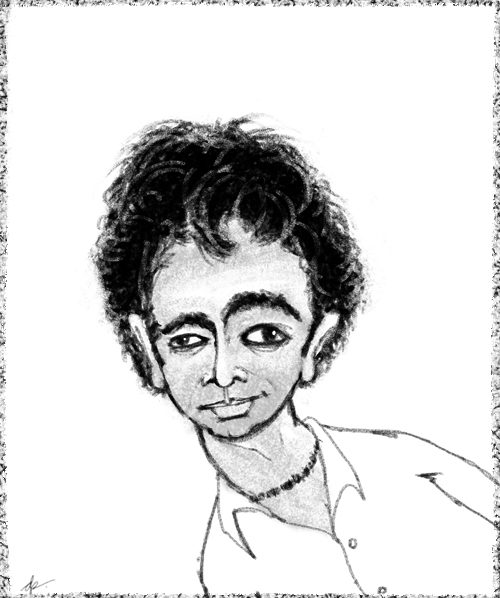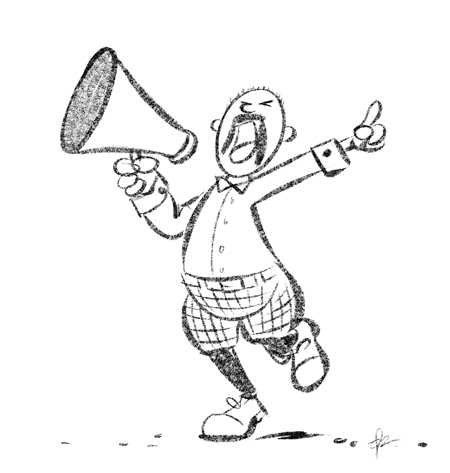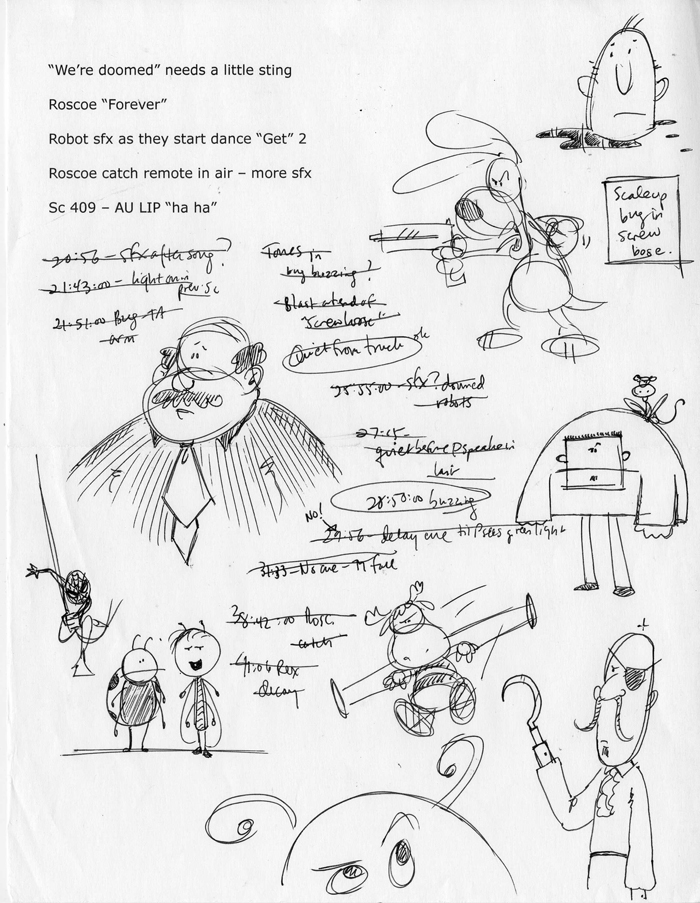
M. Night Shyamalan
Mediocre Happens
I think M. Night Shyamalan is a hell of a talented director. The Sixth Sense? Awesome. Unbreakable? Terrific, (even if I did have a little quibble with the end). Signs? So much fun (“Swing away!”) despite the stink of Gibsonian crazy its now doomed to carry around forever. And I know I’m in the minority here, but liked The Village and Lady in the Water. They both plodded along a bit, and were kind of scattered, but they were different in a “I haven’t seen a million movies like this before” kind of way. Not perfect films, by a long shot, but enjoyable.
So when I finally saw The Happening the other night, (I know–I’m way behind on the movie-watching, but never mind that now), I gotta say, I was really disappointed. I thought there were some real lapses in logic in the script, and more than a couple directorial missteps in there.
Spoilers ahead, so if you haven’t seen the film yet, for goodness sake: look away!
The initial premise of the film is terrific–a mysterious toxin infects the populace, and makes people immediately kill themselves with whatever is at hand. Weird, and creepy! The sequence at the high-rise construction site in New York is particularly heart-wrenching and terrifying, as we see construction workers falling to their deaths by the dozens, (the feeling of dread aided, no doubt, by the unavoidable 9/11 references). In fact, there were scenes scattered throughout the film that I thought were brilliant–for example, the scene in the field where Elliot (Mark Wahlberg) and Alma (Zooey Deschanel), on the run with a small group of survivors, hear gunfire going off just over the hill behind them. They KNOW something awful is happening to a larger group of survivors over the hill, but there’s nothing they can do to help–to go back would only mean sharing their terrible fate. Tough choices = good drama, no?
Overall, however, the movie left me confused, incredulous, and dismayed, especially by all the awful dialogue–so much clunky, needlessly expository, and just plain unnatural-sounding dialogue. Mark Walhberg has a fair share of the bad lines in the film, and as an aside, he’s also playing a kind of milquetoasty science teacher, so he speaks in a high, reedy voice most of the time. I can think of five actors off the top of my head who I would believe in that kind of role, but Mark Wahlberg? With his square jaw, and heavily worked out action-star build? Not for a sec.
Anyway, the bad dialogue makes it difficult for the characters’ reactions to seem genuine, which makes it difficult for me to care what happens to them. To explain: after the great, creepy opening, we learn…well, we learn that the trees are literally trying to exterminate the humans in the film. Fumigating, as it were, by emitting a neurotoxin whenever they sense large (and then exceedingly smaller) groups of people nearby. Its a decidedly silly premise, and would be a tough idea to sell as terrifying under the best of circumstances, but there’s not a chance in hell of me buying the fantastic elements of the story if the characters’ reactions aren’t natural or believable. If they don’t seem to believe whats going on, then it must not be real, and if its not real, then there are no stakes, and if there are no stakes, then why am I even watching?
In particular, I found the character Jess’ reactions absolutely bewildering. A young kid of 11 or 12, she loses both of her parents, and is forced to run for her life with a couple of family friends as people die horrible deaths all around her. And for most of the film, she kind of takes it all in stride. There are some tears, yeah, but in general her blank look (shock, maybe?) made her feel like a device to me–like she was plugged into the story for the audience to care about, and for estranged couple Elliot and Alma to bond over–instead of a real flesh-and-blood character. Toward the end of the film, Elliot, Alma and Jess have been separated, and with no where to run, they decide to leave their respective hiding places so they can be together at the last. So there they are, out in the open, believing they’re breathing the toxin, knowing that any moment their brains will cease to function properly and they will kill themselves in some horribly painful way! And given all that, you’d think there would be some emotion on their faces, especially Jess’. If a young me was in that situation, I would’ve been looking at every nearby rock and rusty garden tool in sheer terror, trying to shut out the inevitable images in my head of me picking one of them up, and coldly using it to murder myself. Scary! But in the film, no one showed any emotion, and the scene just fell flat. Odd choice, that.
There were other problems, too. The murders of a couple teenagers at the hands of some other survivors was bloody, but ultimately lacked any real drama, since we didn’t have any reason to care about those characters. I guess an argument can be made that we should’ve cared about them just because they seemed like nice kids, but all I needed a little more information in order to really care–why were they out there? Where were their parents? Where were they trying to go? Were they scared, even? Who knows. It was a great opportunity to really gut-punch the audience with a random act of violence from an unsuspected source, but since I didn’t love those particular characters, I spent a couple moments trying to pick out the CGI effects from the practicals as the shotgun blast sprayed brains all over the lawn, instead of being shocked and saddened at the brains being sprayed all over the lawn.
After the teenagers are murdered, Elliot, Alma and Jess flee and stumble across an old farmhouse, where they meet Mrs. Jones, played by the outstanding Betty Buckley. The scenes at the farmhouse were interesting, but completely ruined the film’s momentum. Like the film’s producer said in a DVD extra, the Mrs. Jones sequence was like a 25 minute mini-movie at the end of the film, to which my immediate thought was: “When is it ever a good idea to put a 25 minute mini-movie at the end of a thriller?”
The end of the film is where things really fall apart. First, its filled with more expository explanatory yadda yadda yadda talky dialogue–totally unnecessary, and not that much fun to watch. But here’s the kicker: At the end of the film, Elliot and Alma are back in Philly because, well, when they stepped out into the open to bravely face their deaths, the plants had just decided to stop emitting the toxin. Lucky. So they’re back in Philly, and the film goes through great pains to tell us that the whole world now understands that the plants had, for a period of a few days, released a natural neurotoxin in an effort to exterminate humans, and that they could do so again at any moment, anywhere in the world! And then we see exterior shots of Philly, and there are trees and plants all over the place.
Trees and plants. All over the place. Near people.
Unsolicited story-telling advice of the day: whatever world you create for your story, just…respect it. Meaning, treat it as if its real. ‘Cause if its not real to the characters in the story, then its not real to me. And if its not real, there are no stakes, and if there are no stakes, I don’t care.
So, in a world where plants just killed millions of people, do you think for a moment that there would be even one blade of grass anywhere in Philadelphia, or any highly populated area? Would any parent anywhere allow any plant near his or her children? The worst part is that this, finally, is truly cool idea: imagine a world where plants are both necessary for the proper functioning of the planet’s ecosystems, and deadly to humans? What kind of world would that be?
And, more importantly in terms of The Happening, what kind of city would Philadelphia be, if it existed in that world?
Maybe we’d see Elliot and Alma hugging in front of their row house as the Camera pulls back to see people in hazmats suits burning the plants on the street with flamethrowers. Then the Camera pulls wider, and we see people in hazmat suits moving on every street, setting every tree, plant and weed on fire. The Camera pulls wider, and we can see trucks hauling blackened and burnt plants out of the city by the ton, as black smoke from hundreds of small fires rises up and fills the sky over the city. The Camera pulls wider still, and we see clouds of black smoke rising from every city in America…



